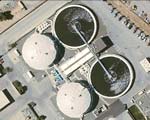Respondents say energy savings is the No. 1 reason for green building.
The agency will require clearer labeling and more stringent testing on the flea and tick control products used on pets.
Under the Lacey Act, pythons and anacondas could be designated as "injurious" and their importation would be prohibited.
ORSANCO survey shows millions of people use the Ohio River for direct contact and indirect contact recreation as well as fish consumption, which would be negatively affected by a wet weather standard.
Suniva and Clipper Windpower get recognition for their solar and wind energy investments.
The company says the increase covers the costs for water quality and supply source improvements.
Advances in renewable energy and conservation will be presented through papers, presentations, and exhibits April 15-16 in Grapevine, Texas.
More than 120,000 people on six continents monitored the condition of their local waterbodies in 2009, an increase of 67 percent over the previous year.
Researchers suggest the same model applies to other cities and recommend stormwater management plans be developed to control polycyclic aromatic hydrocarbons.
Researchers estimated long-term fine particulate matter concentrations across the globe using satellite data.
Air pollution reduction program provides $28 million, including $7 million in stimulus funding.

A retractable, structurally supported geomembrane cover system provides odor control and easy maintenance access to wastewater treatment aeration basins at the Vallejo Sanitation & Flood Control District.
Agency asks the public to report all poisoning incidents to National Poison Center and product manufacturers.
The company predicts that nearly half of the investment in air pollution control in 2010 will be for fabric filters.
Carbon allowances for 2009-2011 sold at $2.07 while future control period allowances sold at $1.86.
Clean water, bottles, and improved oxygen measurement can help assure the elimination of blank failures.